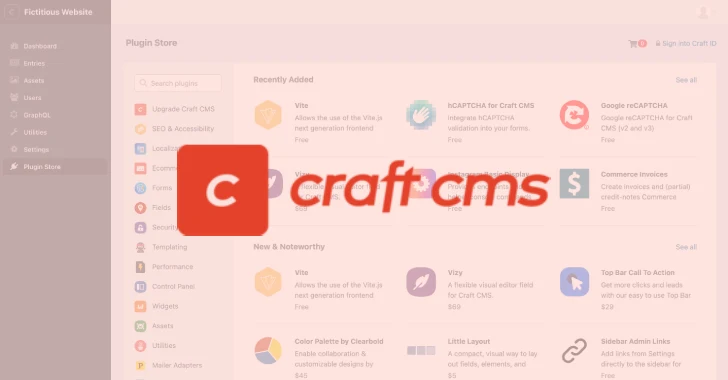In July 2025, the cybersecurity community identified a significant escalation in ransomware attacks when threat actors associated with the Warlock ransomware began exploiting a critical zero-day vulnerability in Microsoft SharePoint. This vulnerability, known as ToolShell and tracked as CVE-2025-53770, became a primary vector for deploying Warlock ransomware across multiple organizations worldwide.
Emergence and Evolution of Warlock Ransomware
Warlock ransomware first appeared in June 2025, initially operating under the radar. However, its prominence surged following the exploitation of the ToolShell zero-day vulnerability. Unlike many ransomware strains that originate from Russian-speaking regions, Warlock is notable for its China-based operational framework. This shift indicates a diversification in the global ransomware landscape, with threat actors from different regions adopting sophisticated attack methodologies.
The initial attacks targeted a range of sectors, including engineering firms in the Middle East and financial institutions in the United States. This broad targeting suggests a strategic approach by the attackers to maximize impact and financial gain.
Technical Analysis of the ToolShell Vulnerability
The ToolShell vulnerability (CVE-2025-53770) is a critical flaw in Microsoft SharePoint that allows for remote code execution. Discovered on July 19, 2025, this vulnerability enables attackers to bypass authentication mechanisms and execute arbitrary code on the affected servers. The exploitation of this vulnerability marked a significant advancement in the tactics employed by ransomware operators, combining known exploitation techniques with emerging malware tactics.
Infection Mechanism and Persistence Tactics
The Warlock ransomware operators employed a sophisticated infection mechanism to infiltrate target systems. A key technique used was DLL sideloading, where the attackers leveraged the legitimate 7-Zip application (7z.exe) to load a malicious payload named 7z.dll. This method is effective in bypassing conventional security detections, as it disguises malicious code within legitimate application processes.
Once executed, Warlock ransomware aggressively encrypts files, appending the .x2anylock extension to the encrypted files. Security researchers observed that Warlock appears to be a rebranded version of the older Anylock payload, incorporating modifications derived from the LockBit 3.0 source code. This indicates a level of sophistication and adaptability in the ransomware’s development.
To maintain persistent access to compromised systems, the attackers deployed a custom command and control framework designated as ak47c2. This framework enables continuous communication between the infected systems and the attackers’ command servers. Additionally, the threat actors utilized custom defense evasion tools signed with a stolen certificate from an entity referred to as coolschool. By employing the Bring Your Own Vulnerable Driver (BYOVD) technique, they were able to disable security software and establish dominance over the system.
Operational Structure and Attribution
Analyses by cybersecurity firms such as Symantec and Carbon Black revealed a sophisticated operational structure behind Warlock’s deployment. The threat group, identified as Storm-2603 by Microsoft’s threat intelligence teams, deployed Warlock alongside multiple ransomware payloads, including LockBit 3.0. This polyglot approach demonstrates operational flexibility and suggests a broader arsenal of cyber-attack capabilities.
The use of multiple ransomware strains in a single attack campaign is unusual and indicates a high level of coordination and resource availability. The deployment of Warlock alongside other ransomware variants suggests that the attackers are not only focused on financial gain but may also be testing different payloads to assess their effectiveness.
Global Impact and Response
The exploitation of the ToolShell vulnerability and the subsequent deployment of Warlock ransomware had a significant global impact. Organizations across various sectors and regions were affected, highlighting the widespread nature of the threat. The attacks underscored the importance of timely patching and the need for robust cybersecurity measures to protect against sophisticated threats.
In response to the attacks, Microsoft released emergency security updates to address the ToolShell vulnerability. Organizations were urged to apply these patches immediately to mitigate the risk of exploitation. Additionally, security researchers provided detailed analyses of the attack vectors and recommended best practices for detection and prevention.
Recommendations for Organizations
To protect against threats like Warlock ransomware, organizations should implement the following measures:
1. Apply Security Updates Promptly: Ensure that all systems, especially those running Microsoft SharePoint, are updated with the latest security patches to address known vulnerabilities.
2. Monitor for Unusual Activity: Implement monitoring solutions to detect anomalous behavior that may indicate a compromise, such as unexpected file encryption or unauthorized access attempts.
3. Employ Defense-in-Depth Strategies: Utilize multiple layers of security controls, including firewalls, intrusion detection systems, and endpoint protection solutions, to defend against various attack vectors.
4. Conduct Regular Security Audits: Perform periodic assessments of the organization’s security posture to identify and remediate potential weaknesses.
5. Educate Employees: Provide ongoing training to staff about the risks of phishing and other social engineering attacks that could lead to initial compromise.
By adopting these practices, organizations can enhance their resilience against ransomware attacks and other cyber threats.
Conclusion
The exploitation of the ToolShell zero-day vulnerability by Warlock ransomware actors represents a significant development in the cybersecurity landscape. The sophisticated techniques employed by the attackers, combined with the global reach of the attacks, underscore the evolving nature of cyber threats. Organizations must remain vigilant, apply security updates promptly, and implement comprehensive security measures to protect against such sophisticated attacks.



